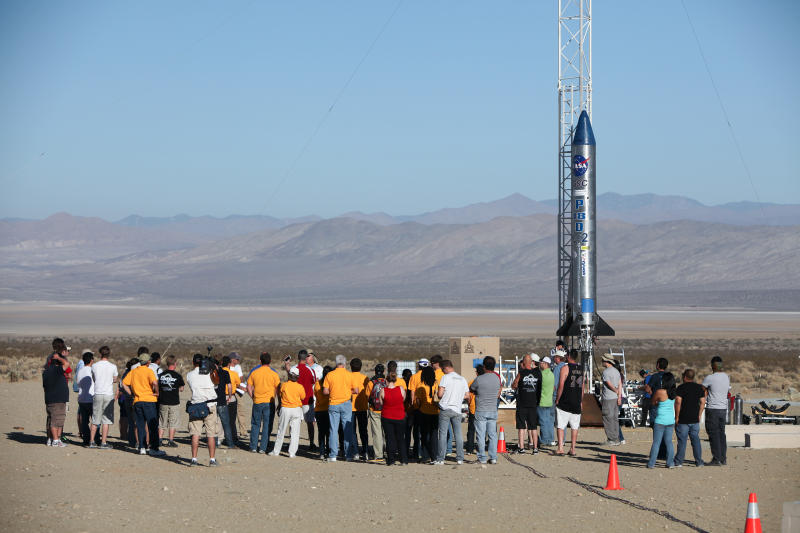
Four tiny spacecraft soared over the California desert June 15 in a high-altitude demonstration flight that tested the sensor and equipment designs created by NASA engineers and student launch teams.
 The satellites, known as CubeSats, lifted off from the Friends of Amateur Rocketry launch site in the Mojave Desert aboard a Prospector 18 rocket, built by Garvey Spacecraft Corp. of Long Beach.
The satellites, known as CubeSats, lifted off from the Friends of Amateur Rocketry launch site in the Mojave Desert aboard a Prospector 18 rocket, built by Garvey Spacecraft Corp. of Long Beach.
Data recorded by the CubeSats' onboard sensors during Saturday's flight test will help characterize the environment and loads the small satellites encountered during flight -- information that's critical to the scientists and engineers developing similar spacecraft for future missions.
CubeSats are 4-inch cubes that pack a lot of capability into their small size. While they typically fly as secondary payloads on larger missions involving bigger spacecraft and rockets, the goal is to eventually have the option of launching them as the primary payload on smaller rockets.
Saturday's flight test was a critical step forward in the development of such missions.
Test team personnel reported to the launch site as the sun began to rise. At 10:52 a.m. Pacific Time, the Prospector rocket's single liquid-fueled engine ignited and the vehicle quickly rose above the desert landscape, reaching a peak altitude of about 9,000 feet. The vehicle's parachutes released prematurely, but the rocket continued on its path, coasting and tumbling, ultimately landing on its side with its pint-sized payload still tucked safely inside.
But the early parachute deployment and hard landing are not considered setbacks, according to Garrett Skrobot, the High Altitude Demonstration Mission's project manager at NASA's Kennedy Space Center.
"We consider it a success because we were able to test out all the experiments, and this flight also proves the versatility of the experiments we were flying," Skrobot said. "What we learned was that we're able to fly four payloads with new hardware in an unexpected environment -- and they performed."
"The whole point is to test these systems before going on to the next vehicle," he added.
Each of the four CubeSats was designed to test or evaluate different aspects of the flight. All were retrieved from the rocket after landing, and team members already are working to recover as much data as possible from the satellites' memory cards.
Two student-built spacecraft were designed to work together to record the launch environment. CP-9, built by the California Polytechnic State University in San Luis Obispo, and StangSat, created by students at Merritt Island High School in Florida, also were planned to demonstrate the ability to communicate with each other through an onboard Wi-Fi connection.
The duo, which endured the rough ride with minimal damage, are slated to fly aboard a Falcon 9 rocket during SpaceX's fifth commercial resupply services mission to the International Space Station.
The Rocket University Broad Initiatives CubeSat, or RUBICS-1, was contributed by Kennedy employees participating in the center's Rocket University program. The spacecraft was instrumented to check out the performance of a new, lightweight version of the satellites' carrier, built by Tyvak of Irvine, Calif.
PhoneSat, built by NASA's Ames Research Center in California, take advantage of smartphones' power, memory and camera technologies, compact size, and off-the-shelf availability for the development of low-cost spacecraft. RUBICS and PhoneSat received data during the flight.
Participants will take advantage of the learning opportunity afforded by Saturday's flight anomaly to assess what they need to change as they recondition the satellites for upcoming missions.

 Previous page
Previous page Back to top
Back to top







